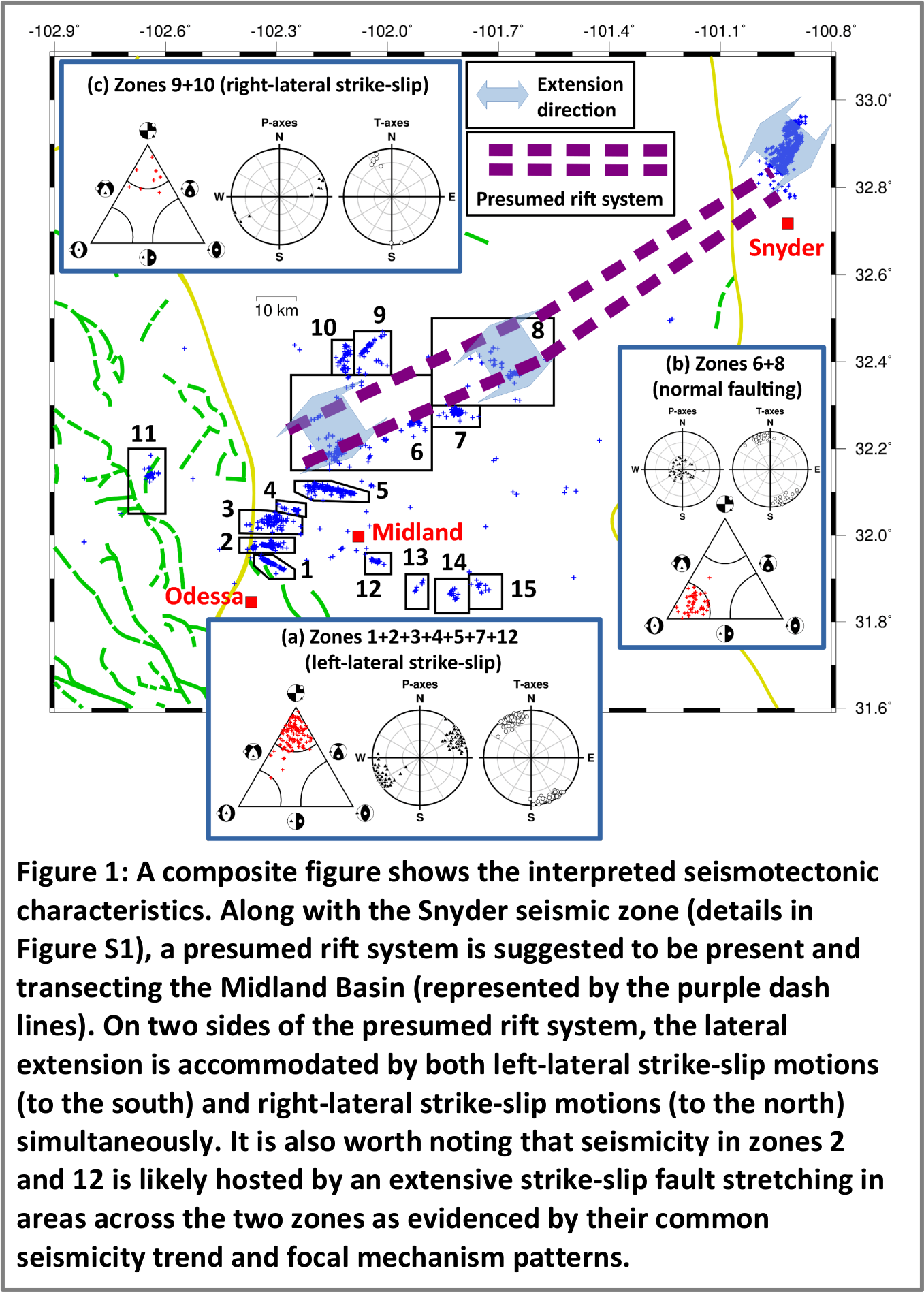Complex Seismotectonic Characteristics in the Midland Basin of Texas: Constrained by Seismicity and Earthquake Source Mechanisms
Dino Huang, Yangkang Chen, and Alexandros Savvaidis
Seismological Research Letter, 2024, https://doi.org/10.1785/0220230269
Study Summary

Oil and gas activities have been active in the Midland Basin of West Texas in the last several decades, and have resulted in induced seismicity in recent years. Studies have shown that sizable seismicity is often hosted by previously unknown basement-rooted faults. However, limited detailed fault mapping in this area makes the identification of potential seismogenic structures unclear, leading to poor assessment of seismic risk posed by these basement-rooted seismogenic faults. It is of great importance to improve our knowledge of the basement-rooted seismogenic structures in the Midland Basin. Given that earthquakes occur in a preexisting fault system, induced seismicity has allowed us to study and reveal the hidden seismotectonic characteristics that otherwise would not have been discovered for an aseismic tectonic regime like the Midland Basin. For this purpose, we first used earthquake catalogs published by the Texas Seismological Network to (1) delineate seismicity to identify seismogenic structures; (2) determine source mechanisms and leverage the obtained source mechanism to further invert for the regional stress field. At the end, we combined these results to reveal seismotectonic characteristics for the Midland Basin. We have identified 15 distinctive seismogenic zones (Figure 1). A vast majority of seismicity is located in the crystalline basement. Most of the 15 seismicity zones contain seismogenic structures commonly presenting linear geometry but with various orientation. Across the 15 identified seismogenic zones, the inverted focal mechanisms present a mix of strike-slip and normal faulting patterns. Furthermore, the inverted stress field of the 15 seismogenic zones commonly shows an extensional direction oriented at 330° azimuth. A combination of all seismogenic features has demonstrated that the Midland Basin contains fault architectures resulted from the latest extensional tectonic activities, creating a series of basement-rooted strike-slip and normal faults. The two types of basement-rooted faults coexist in our study area, where a presumed basement-rooted rift system transects the Midland Basin. They are reactivated by the current fluid injection.
Why is this research important and why do the results matter?
- Using passive seismic methods and leveraging data from TexNet, this research has revealed previously unknown seismogenic structures and their seismic potential in the Midland Basin. Results of this research can help inform policy makers regarding seismic hazard mitigation.